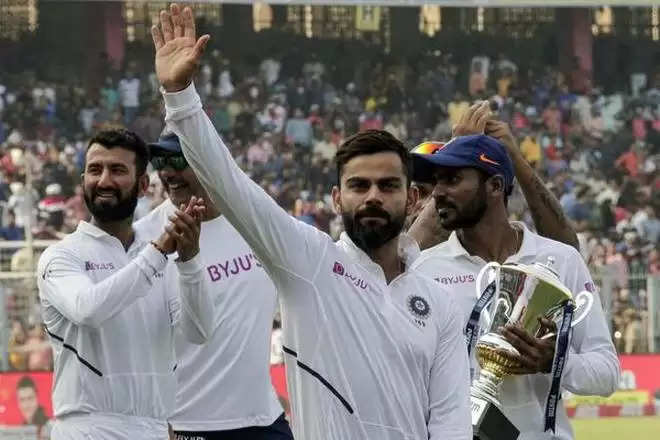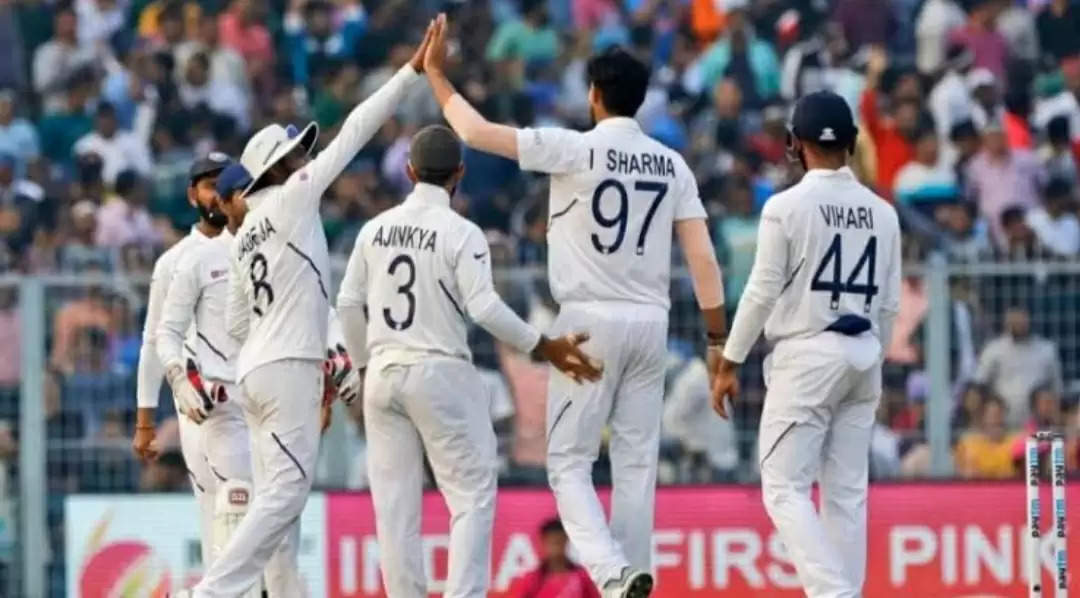What India-Bangladesh, Australia-Pakistan and New Zealand-England tells us about the current flavour of Test cricket

The last six Test matches across the globe have all been lop-sided with one team beating their rivals by an innings’ margin. Just last week, we saw India mug Bangladesh in Indore and Kolkata while Australia and New Zealand inflicted the same on Pakistan and England respectively.
At first glance, it reeks of sheer home domination. But look again at the winners – India, New Zealand and Australia – and the opposition – England, Bangladesh and Pakistan – and there is an underlying similarity in the way each of the two groups play their Test cricket and see Test cricket as such.

India, New Zealand and Australia have all become powerful Test forces in 2019 and the one common denominator is that they all value red-ball cricket and give it due importance – be it Virat Kohli, India’s Test cricket torch-bearer, who eloquently speaks about playing in whites, or Justin Langer and the Aussie selectors, who ignored Josh Hazlewood from the World Cup squad so that he could come firing in the Ashes, or New Zealand, who have a number of specialists in the longest format of the game.
Test cricket is often dubbed the real deal by purists and the new-age fan scoffs at the suggestion pointing out how advanced T20 cricket and the thinking surrounding it is. While that might be true to an extent, Test cricket, a game of endurance, is often a different ball game altogether. It requires specialized skills, impeccable temperament and physical stamina. This is getting truer by the day and the current trend definitely has us splitting the top Test nations into two halves – one which understands and gives Test cricket due credit and another which just survives in Test cricket.
India, New Zealand and Australia come under the first bracket. England, which used to be there, has slipped down the ladder much like their skipper’s Test match rating, which has gone down from 917 to 697 in the last few years. England’s “Total Cricket” – a faux pas to divert attention from their focus on limited-overs cricket – has only seen them bin Test matches for proficiency in limited-overs cricket.

England’s focus on limited-overs cricket has put their red-ball game in danger
The hold they had on Test cricket has gone down with them seeking success through limited-overs strategies in red-ball cricket. From the blunder of playing Jason Roy in a Test side to banking on their lower middle-order to rescue the innings after a faltering top-order has them reeling, England’s strategies have been found wanting.
The focus on white-ball cricket and the upcoming Hundred means that Test cricket has taken a backseat and it reflects in their on-field showing. Leveling the Ashes at home was a huge disappointment for them, but Australia had thrown them off balance with meticulous preparations, unlike the hosts, whose World Cup win came at a price.

New Zealand have embraced Test cricket in recent times
At Mount Maunganui, in their innings loss to New Zealand, England were categorically dissected and punched in the face by a ruthless Kiwis side that has produced some of the best Test cricket in recent times. New Zealand’s success in the longest format is built on players they have identified to carry the baton in whites – from the irresistible Neil Wagner to the tenacious BJ Watling and the unassuming Henry Nicholls.
Also Read: The Rise And Rise Of Black Caps In Test Cricket
On the other hand, Pakistan at Brisbane – now in the second half of Test sides discussed earlier – chose to sit out a Test specialist like Mohammad Abbas and instead played Shaheen Afridi, a rookie seamer Naseem Shah and a bits and pieces all-rounder in Ifthikar Ahmed, while batting an ODI specialist, Haris Sohail at the crucial no. 3 position. They even brought Ifthikar’s part-time off-spin to the attack earlier than veteran Yasir Shah’s guile. Flawed thinking has played a huge role in Pakistan’s demise. They were the no. 1 ranked Test side in August 2016, but has since slipped down to no. 7 in the latest ICC rankings.
New Zealand is the exact opposite. Kane Williamson’s icy demeanor has hid the ruthless manner in which New Zealand have dominated Test cricket, albeit with a bit of help from home games. Since 2017, New Zealand have won 12 and lost just 3 of the 19 Tests they have played. This involves six series wins (all at home), two drawn series’ including one in Sri Lanka earlier this year and a solitary Test loss resulting in surrendering the series to South Africa.
Bangladesh is another team who have been battling surviving among the top Test teams rather than improving themselves. This brings us to another detrimental strategy in modern day Test cricket – producing aggressive tailor-made wickets at home. Bangladesh and South Africa have been guilty of this and their batting in conditions outside their comfort zone has come spiraling down at dangerous pace.

India have transformed themselves into a beast in Test cricket but the success didn’t come overnight
At Indore and Kolkata, what became more evident than Bangladesh’s ill-equipped preparations for the series was that they aren’t trained to play Test cricket. The whole attitude from upcoming players in the country is one of seeking instant gratification, possible only in T20 cricket and ODIs, to an extent. Lack of financial incentives further their despising attitude towards Test cricket. This brings us to another issue haunting Test cricket, one that Kohli so aptly put after the win in Kolkata.
“Eventually the strength of the Test cricket should come from how strong you’re financially. Unless you keep them [players] financially well, after a time their motivation will go down,” the Indian skipper said. It’s true of the second-tier teams like South Africa, who lose players to Kolpak year after year, and Bangladesh and West Indies, who churn out more T20 talent than proper Test players.
Succeeding in Test cricket – unlike in ODIs and T20Is – is a herculean effort that has to come through rigorous mental preparation and strategising. There are no two ways about it and it shows why Test cricket is only aced by few teams these days.
India’s case is one of utter domination reminiscent of the Aussies of 2000s and Windies of the 1970s and 1980s. Criticise Kohli and the Ravi Shastri regime as much as you want, but like it or not, they have built a Test team that can rule in varied conditions. India have won their last four matches by an innings margin and their pacers have out-bowled their spinners at home.
India’s success brings us to the one basic rule to win Test matches – picking 20 wickets before the opposition picks your 20. It goes against the marketing gimmick that the gentleman’s game is a batsman’s game. It never was and never will be. In every format, the quicker you pick wickets, the higher your chances of success. India have thrived after understanding this fundamental principle of cricket. From their five-bowler strategy to pacers ruling over spinners at home, India have tested their limits and brought us to the future of Test cricket.
This future involves bowlers dominating and pitches losing importance. “Bhaad me gaya pitch (To hell with pitches)”, Shastri roared after the series win over South Africa. “Be it Johannesburg or Mumbai or Delhi or Auckland or Melbourne, our work is to pick up 20 wickets. We need a team unit when it comes to bowling for picking up 20 wickets.”
This is exactly what teams will seek from now in Tests. India have just perfected the formula early and is likely to rule Test cricket for the foreseeable future because of this. They have eliminated the pitches and the batsmen to an extent. Sure, they may not have won four Tests by an innings with a poorer set of batsmen, but they would still have won and that essentially sums up the secret of their success.

